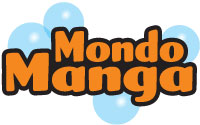Manga, An All-Ages Starter List | Mondo Manga
In this inaugural column, Brigid Alverson offers a sampling of all-ages manga. Engaging stories that don't feel childish, most are good picks for teens and tweens.
 The world of manga has changed a lot since the medium first became a teen sensation, thanks to the popularity of “Sailor Moon” and “Naruto” manga and anime in the 1990s and early 2000s. Today, there are new genres, more digital content than ever before, and a surging popularity of light novels, which are illustrated young adult works that often tie in with anime and manga.
The world of manga has changed a lot since the medium first became a teen sensation, thanks to the popularity of “Sailor Moon” and “Naruto” manga and anime in the 1990s and early 2000s. Today, there are new genres, more digital content than ever before, and a surging popularity of light novels, which are illustrated young adult works that often tie in with anime and manga.
Some things haven’t changed. Anime—Japanese animation—tends to drive the popularity of manga. While there is ever more variety in manga available in English, action stories featuring boys still dominate U.S. sales. My Hero Academia (Viz), a story about a school for superheroes where teenagers with peculiar superpowers, called “quirks,” battle an array of bizarre villains, now tops the list.
 A brief guide to manga vocabulary
A brief guide to manga vocabulary
In Japan, manga is marketed toward specific audiences: shoujo (teen girls), shonen (teen boys), josei (young women), and seinen (young men). U.S. publishers and fans often use those terms to describe English-language manga, too, although audiences may well read across these categorizations. There are several genres within those demographics—romance, comedy, action—but a shonen romance is different from a shoujo romance. (Quickest way to tell: A shonen romance is told from the boy’s point of view, a shoujo one from the girl’s).
The U.S. publisher Viz has retained some of the Japanese branding: Shonen Jump is the most popular boys’ manga magazine in Japan, so Viz uses it as the title for its own digital magazine and the name of its shonen imprint. Shojo Beat is the Viz imprint aimed at girls and women. While Shonen Jump usually sticks to the teen demographic, Shojo Beat includes both teen and adult titles.
A few genre terms have also made it across the Pacific. Yaoi manga are romances between two men, and yuri are romances between two women. Isekai manga are those in which the hero is transported to another world. And just so you know, hentai refers to hard-core pornography with graphic sex, while ecchi manga is less graphic but also heavily sexual.
We’ll do a deep dive into the various genres and stories in future columns, but here, I’ll provide a sampling of all-ages manga, something librarians frequently ask about. These engaging stories don’t feel childish, and most are good picks for teens and tweens.

“Kingdom Hearts.” Shiro Amano. Yen Pr.
Based on the game of the same name, “Kingdom Hearts” mixes Disney characters with its own protagonists. Each story centers on Sora, a boy who wields a special weapon, the Keyblade, and teams up with Goofy and Donald Duck to fight dark forces. In this universe, Mickey Mouse is king; other Disney characters appear in each story. There are several different manga series: “Kingdom Hearts 358/2 Days,” “Kingdom Hearts: Chain of Memories,” “Kingdom Hearts: Final Mix, Kingdom Hearts II,” and “Kingdom Hearts III,” launched digitally in May.
Disney manga. Various creators. Tokyopop.
Tokyopop has a number of Disney titles, all produced in Japan. “Disney Kilala Princess” is a five-volume series featuring an ordinary girl, Kilala, who becomes a princess and must rescue a friend with the help of the other Disney princesses. “Magical Dance” follows a girl who joins a dance competition with magical assistance from Tinker Bell. In “Stitch!” the Lilo & Stitch character moves to Okinawa and has new adventures. Tokyopop also publishes manga based on Tangled, Pirates of the Caribbean, and other films.
“The Legend of Zelda.” Akira Himekawa. Viz.
Viz originally published this manga in single volumes. It later published it as the “Legendary Edition,” two-in-one omnibuses (double-sized volumes with a larger format). The stories are adapted from the Legend of Zelda games, so they’re fairly short. A single volume of the Legendary Edition may include one or two complete stories. The hero is a young boy named Link; each story places him in different circumstances and on a quest. The original “Legend of Zelda” series is rated for all ages, but the newer, darker “Legend of Zelda: Twilight Princess” is rated 13+.
“Plum Crazy! Tales of a Tiger-Striped Cat.” Natsumi Hoshino. Seven Seas.
Plum, a tiger-striped cat, lives with a single mom and her teenage son. Plum can understand what humans are saying. In the first volume, a kitten named Snowball upsets Plum’s comfortable life and adds to the cuteness overload.
“Chi’s Sweet Home” and “Chi’s Sweet Adventures.” Konami Kanata. Vertical.
Chi is a cute kitten who gets separated from her mother and lives with a goofy family. The stories are short, and unlike most manga, “Chi’s Sweet Home” is published left to right and in color. Adults will like Kanata’s delicate watercolors, too. Vertical originally published “Chi’s Sweet Home” in single volumes, then gathered it into three-in-one omnibuses called “The Complete Chi’s Sweet Home.” The manga spawned an animated series on Amazon Prime TV, and “Chi’s Sweet Adventures” are adaptations of episodes in a four-panel format. Chi talks to herself in babyish speech that humans can’t understand—but readers can.
“Pokémon.” Various creators. Viz.
Pokémon is immensely popular with young readers but somewhat confusing for adults, because the series correspond with the numerous Pokémon games and movies. The manga is rated for all ages; characters and Pokémon in each series vary depending on the game on which it’s based. The “Pokémon X•Y” and “Pokémon Sun & Moon” series, published in short volumes, are particularly good for young readers. Viz also publishes single-volume manga that tie in with movies, such as Pokémon the Movie: I Choose You, introducing readers to the most common characters. Pokémon “Pocket Comics” combine short, four-panel gag strips with trivia quizzes, jokes, and riddles.
“Little Witch Academia” by Yoh Yoshinari, Keisuke Sato, and TRIGGER. Yen Pr.
This is as classic a kids’ story as you can get: A girl with no magic powers goes to witch school. The heroine, Akko, is a fan of a famous witch, Shiny Chariot, and wants to be just like her. Not everyone at the prestigious Luna Nova Academy holds Shiny Chariot in such high esteem, though, nor do they have much patience for a wannabe witch.This manga is an adaptation of the anime of the same name.
Brigid Alverson edits the “Good Comics for Kids” blog.

RELATED
The Adventures of Invisible Boy
King Cheer
Freshman Year
Continental Drifter
The job outlook in 2030: Librarians will be in demand
The job outlook in 2030: Librarians will be in demand
ALREADY A SUBSCRIBER? LOG IN
We are currently offering this content for free. Sign up now to activate your personal profile, where you can save articles for future viewing





Add Comment :-
Comment Policy:
Comment should not be empty !!!
Joseph Miller
Congrats on the new column. Glad to see more attention being paid to manga.Best Wishes.Posted : Jul 16, 2019 01:09